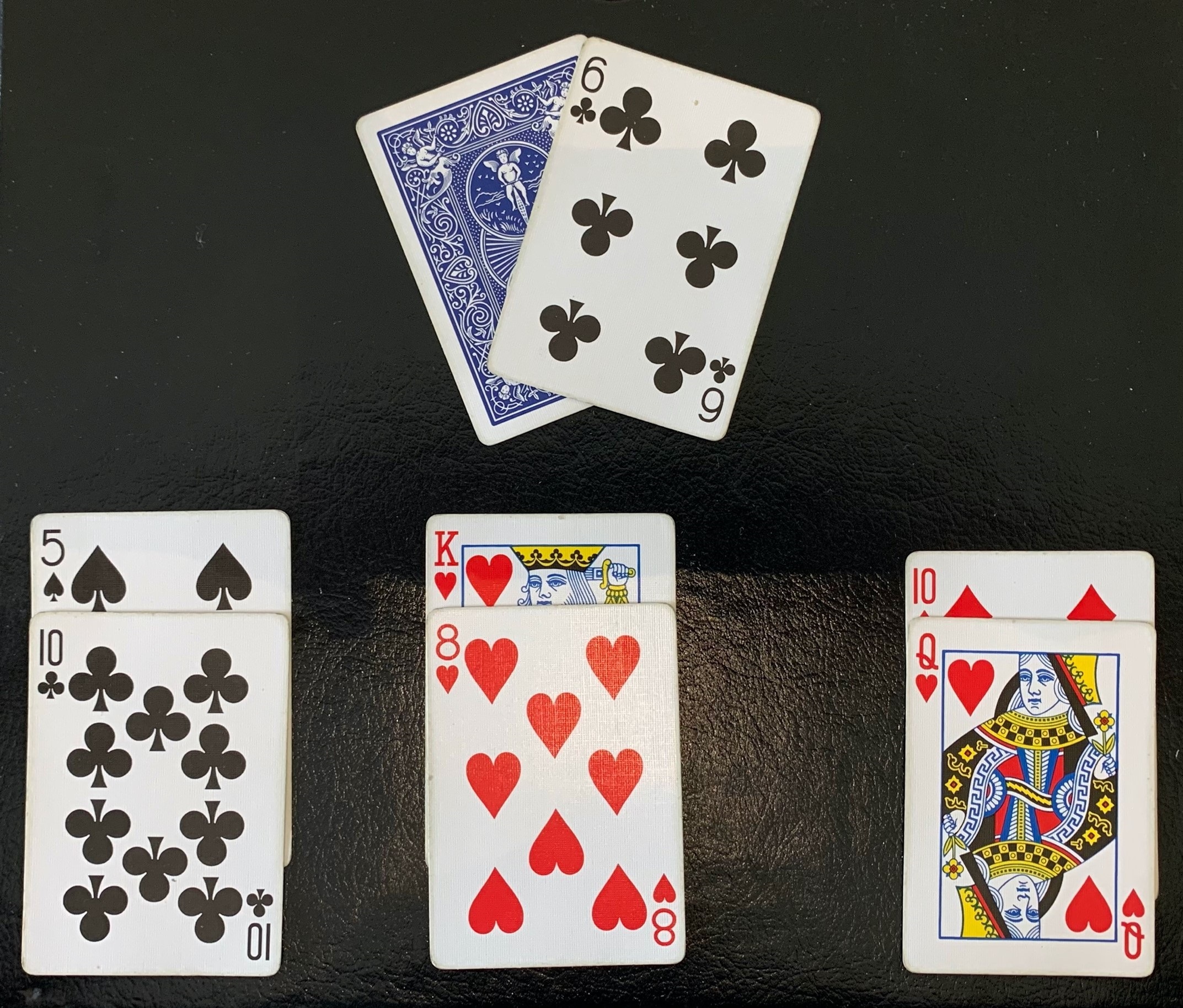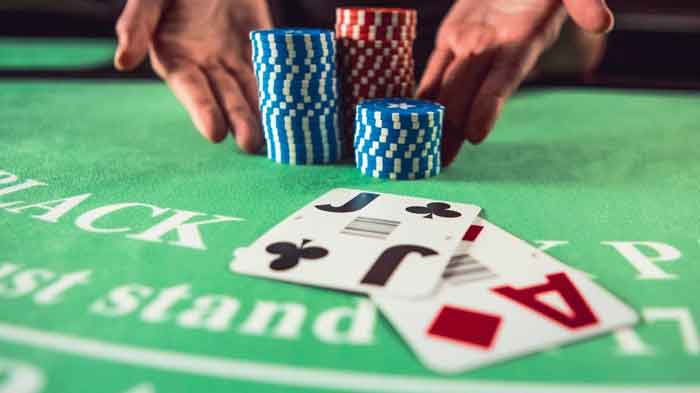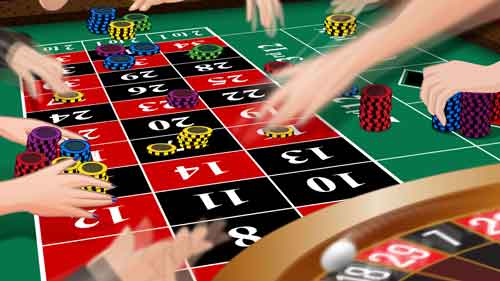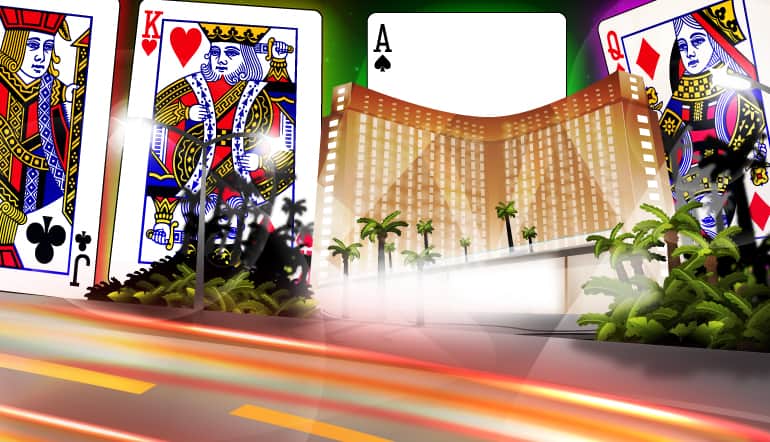Let's not kid; it's tough mastering a new game. Blackjack is the ultimate casino card game. It features an incredibly low house edge, and players have opportunities to shape the outcome of the game on every play. Skill, strategy, and good fortune combine to create great blackjack players. In this guide, we explore how to play blackjack like a boss.
There are multiple variants of blackjack, but most of them subscribe to the same fundamental rules. Whether you're playing Classic Blackjack with a single deck of cards, or Multihand Blackjack with 6 decks of cards, there is always a common denominator. In blackjack games, the objective is simply to beat the dealer's hand total without exceeding 21. Many players mistakenly believe that a win is only possible if you hit 21. Now that we've debunked that myth, let's continue with this in-depth expose on how to play blackjack!
Table of Contents
How come the house always has an edge over the player in blackjack?
It may come as a surprise to learn that the house has an inherent advantage in blackjack, even though the player and the dealer are playing the same game by the same rules. The edge comes from the fact that the dealer only reveals 1 card – the upcard, while the other card is face down – the hole card. Players are required to act (Hit, Stand, Split, Double, Surrender, Take Insurance, et al) with imperfect information. The player is always first to bust in blackjack, and in that case the dealer automatically wins. Even if the player and the dealer bust in the same round of play, the dealer wins.
Fortunately, blackjack has an incredibly low house edge. It can be as low as 1%, or less if players use basic blackjack strategy. In percentage terms, blackjack generally has an RTP of around 99%. This means that it has a 1% house edge. For every $1,000 that you bet, the theoretical return to player (as determined by millions of rounds of play through computer simulations), you can expect to win back is $999. Of course, absolutely anything can happen to your bankroll over the short-term. You can double your money, lose all your money, come out even, et cetera. Provided lady luck is on your side, and you use basic blackjack strategy, you should come out ahead of the dealer.
Understanding what it means to hit, stand, split, double, and surrender in blackjack
First things first: Buy into a game of blackjack. In other words, bet!
There are several basic actions that players can take in blackjack. After you have been dealt 2 cards, the dealer has 1 upcard, and one face down card, the following actions are available to players:
Hit – Request another card from the dealer. You can continue hitting until you're satisfied with your hand total. If you bust, you lose.
Stand – When you decide to stand, you will not take any more cards. You're satisfied with your hand value, and you will wait to see what the dealer’s hand total is to determine whether you have won or lost.
Split – a player can decide to split identical cards. Such as a pair of 10s, 6s, 8s et cetera. Remember that splitting cards requires you to place an additional bet on the split cards. Each hand is played as a separate hand against the dealer. You can win on your split pairs, on one of them, or on none of them. Pair splitting is generally frowned upon by the pros.
Double – The Double Down bet is an interesting bet in blackjack. When you double, you request one more card from the dealer, and you double your bet. No additional cards can be dealt after the double.
Surrender – As its namesake suggests, the surrender option allows you to forfeit your hand and 50% of your bet if you feel that the dealer is likely to win. This option is not always available, but it can be valuable given the long-term percentages as you're about to see later on in this blackjack guide.
There is another interesting bet option in blackjack which we cannot in good conscience recommend to players. It is known as an Insurance Bet. This bet is available if the dealer’s upcard is an Ace. Insurance bets pay 2:1, but as we are about to show you, this is a sucker bet. Why? Take a look!
Let's assume you’re playing a $100 game of blackjack, and the dealer is showing an Ace upcard. If you place an insurance bet, you will have to pay an additional $50 on top of your $100, for a total bet amount of $150. If the dealer has blackjack, you will lose your $100 initial bet and win 2:1 on your $50 bet, or $100. In other words, you break even. Sounds good right?
But wait, here's the clincher: The probability of the dealer having a 10-value card beneath the Ace is 4/13, and 9/13 of not having blackjack. Since the bet only pays 2:1 which is worse than the 9 cards that don't make blackjack and 4 that do (9:4), you will lose more money in the long run with this bet. As you are about to see from our blackjack hands, the more 10-value cards in play, the lower the probability of the dealer having blackjack with an Ace upcard!
What are the odds of drawing a specific card in blackjack?

Assuming you're playing Classic Blackjack with a standard 52 card deck, there are 13 cards and 4 suits. Card values include: 2-3-4-5-6-7-8-9-10-Jack-Queen-King-Ace. Aces can assume a value of 1, or 11, while number cards have their nominal value, and royals are valued at 10. The 4 suits include Hearts, Diamonds, Spades, and Clubs.
On a basic level, the odds of hitting any card (suits don't matter in blackjack) are 1/13, or 7.692%. But that doesn't tell the true story since blackjack is a game with ever-changing odds, and there are at least 4/13 cards with the same value in blackjack. Let's elaborate: card values 10, Jack, Queen, and King all have a value of 10. Therefore, the odds of hitting a 10-value card are 4/13, or 30.769%. If you are holding an Ace, and you're hoping for the next card drawn to be a 10-value card, you’ve got pretty good odds!
Things get much more complicated when there are already cards on the table. Assuming a 52 card deck of Classic Blackjack, and the following cards already on the table:
• Player Hand: 10 of Diamonds, Queen of Hearts
• Dealer Hand: 6 of Clubs, Hole Card Unknown
Remember that in most blackjack games, the dealer draws to 16 and stands on all 17s. In blackjack, a Soft 17 contains an Ace valued as 11, while a Hard 17 contains an Ace valued as 1, or a hand that does not contain an Ace at all. This is an important rule that often comes up in blackjack, so be aware of it.
What are the odds now?
As the player hand is already valued at 20, the odds are incredibly good that the player will win this hand. However, the dealer’s chances of hitting a 10-value card as the hole card are diminished since 2 X 10-value cards are already removed from the deck. That means that there are 3/13 Hearts + 3/13 Diamonds + 4/13 spades + 4/13 Clubs of 10-value cards left in the deck. That means that there is a total of 14/52 of 10-value cards in the deck, or 26.923%. That is lower than 30.769% if they were no 10-value cards displayed.
That's how you can use odds to calculate the probability of specific cards being dealt in a game of blackjack.

Now, let's consider a game of blackjack with multiple players competing against the dealer (from right to left as pictured above).
• Player Hand A: 10 of Diamonds, Queen of Hearts
• Player Hand B: King of Hearts, 8 of Hearts
• Player Hand C: 5 of Spades, 10 of Clubs
• Dealer Hand: 6 of Clubs, Hole Card Unknown
Since there are now 4 x 10-value cards already on the table, the dealer’s chance of drawing a 10-value card declines from 16/52 to 12/52, or just 23.076%!
By the same token, if there were plenty of cards valued at 5 or less on the table, the probability of hitting one such card to get close to 21 diminishes. That's precisely why card counting is particularly effective in Classic Blackjack games with a single deck of cards in play.
Pick a blackjack table with the best blackjack odds
Here is a little-known fact that many novice blackjack players don't know: There are 6:5 blackjack tables and there are 3:2 blackjack tables. Which one should you play at? Obviously, you will be better served where the odds are more favorable to the player. For example, at a 6:5 blackjack table, you will win $6 for every $5, if you have blackjack. That means a $100 bet will pay $120 on blackjack. With a 3:2 blackjack table, you will win $3 for every $2 that you bet. Put differently, a $100 bet will pay $150 on blackjack. Would you believe that the 6:5 odds increase the house edge to almost 2%? A large number of casinos in Atlantic City and Las Vegas offer 6:5 blackjack, and are gradually phasing out many of the 3:2 blackjack games.
Blackjack house odds can further be reduced by looking for tables with a surrender option. You may wish to surrender your cards if you're holding a hand that has a large probability of losing against the dealer. For example, if the dealer’s upcard is a Royal, or an Ace, you can surrender your hand and forfeit 50% of your bet. That way you won't lose all your money if you feel that the dealer is going to win the hand. According to legendary blackjack maestro, Henry Tamburin PhD, if you are dealt a hand value of 16, you have a 23.4% chance of winning if you hit, a 22.8% chance of winning if you stand, and a 50% chance of winning if you surrender. Astonishingly, the surrender option costs you less than hitting or standing over the long term*
There you have it folks! The quintessential guide on how to play blackjack like a boss. We encourage you to click on the links in this post, and practice blackjack in demo mode for a better understanding of how to play blackjack.
*[Henry Tamburin https://www.888casino.com/blog/blackjack-strategy/surrender ]















